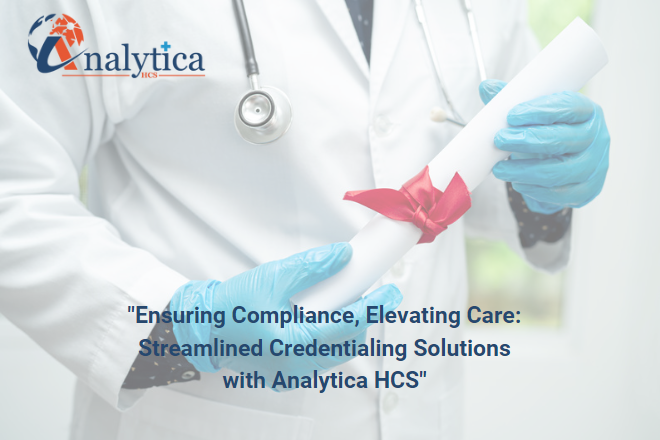
Understanding Physician Credentialing: A Critical Step in Healthcare Compliance
Physician credentialing is a fundamental process in the healthcare industry, ensuring that physicians and other medical professionals are qualified to provide care. It involves verifying the qualifications, experience, and professional background of healthcare providers to maintain a standard of care that protects patients and ensures compliance with legal and regulatory frameworks. For healthcare organizations, physician credentialing is more than a procedural necessity; it’s a critical aspect of risk management, regulatory compliance, and quality assurance.
What is Physician Credentialing?
At its core, credentialing is a thorough review of a physician’s credentials, including:
- Education and Training: Verifying degrees, residencies, and any specialized training.
- Licensing: Ensuring that the physician holds a valid and up-to-date medical license in the state where they practice.
- Board Certification: Confirming if the physician is board-certified in their specialty, indicating they’ve met additional criteria and passed rigorous exams.
- Work History and Experience: A review of their work experience, medical practices, and any gaps in their professional timeline.
- Malpractice Claims and Disciplinary Actions: Screening for any malpractice claims, lawsuits, or disciplinary actions taken by medical boards.
- References: Gathering professional and peer references to attest to the physician’s abilities and conduct.
This comprehensive review ensures that patients receive care from qualified professionals while safeguarding healthcare organizations from legal and financial liabilities.
Why is Credentialing Important?
- Patient Safety and Trust
Credentialing directly impacts patient safety. When physicians are thoroughly vetted, patients can be confident they’re receiving care from qualified professionals. A robust credentialing process ensures that only competent and capable physicians can practice, maintaining high standards across healthcare settings. - Compliance with Legal and Regulatory Standards
Healthcare facilities must adhere to various state and federal regulations, such as those outlined by The Joint Commission, the National Committee for Quality Assurance (NCQA), and the Centers for Medicare & Medicaid Services (CMS). Failing to maintain up-to-date credentialing can result in penalties, loss of accreditation, or even lawsuits. - Insurance Reimbursement
Insurance companies also require credentialing for physicians before they can be included in provider networks. Without proper credentialing, a physician may not be eligible for reimbursement from insurance companies, leading to financial losses for healthcare facilities. - Minimizing Legal Risks
Inadequate credentialing can expose healthcare organizations to litigation, especially if a physician with unresolved malpractice issues or disciplinary actions provides care. A proactive credentialing process mitigates these risks by ensuring all necessary checks are completed before the physician begins practice.
The Credentialing Process: How It Works
The physician credentialing process involves several steps, each designed to ensure that all relevant information is obtained and verified.
- Application Submission
Physicians are required to submit detailed applications that include their personal and professional history, education, licensure, and certifications. They also provide details of any malpractice claims, disciplinary actions, and criminal records. - Primary Source Verification (PSV)
This is one of the most critical steps in the credentialing process. Healthcare organizations must verify the information directly from the primary sources, such as medical schools, state licensing boards, and certification bodies. The goal is to eliminate any falsified documents or misleading claims. - Review and Approval
Once the information is verified, the credentialing committee, which includes peers and administrators, reviews the application. They assess the physician’s qualifications, work history, and any potential risks before making a decision on whether to approve the credentialing request. - Ongoing Monitoring and Re-Credentialing
Credentialing isn’t a one-time event. Healthcare providers must be re-credentialed periodically to ensure they remain in good standing. This ongoing process involves regular monitoring of licenses, certifications, and any new malpractice claims or disciplinary actions.
Challenges in Credentialing
While the credentialing process is essential, it can be time-consuming and complex. Some common challenges include:
- Time Delays: Primary source verification and gathering necessary documentation can take weeks, leading to delays in physician onboarding.
- Data Management: Managing large amounts of documentation and information across different platforms can be overwhelming, especially for larger healthcare organizations.
- Regulatory Changes: Keeping up with changing state and federal regulations can make it difficult to ensure ongoing compliance.
Streamlining the Credentialing Process
Many healthcare organizations are now turning to technology solutions to streamline the credentialing process. Credentialing software and services can automate primary source verification, document management, and regular updates, reducing the burden on administrative staff and improving accuracy. This not only speeds up the process but also ensures that healthcare organizations remain compliant with evolving regulatory standards.
Analytica HCS: Your Credentialing Partner
At Analytica HCS, we understand the complexities and challenges involved in physician credentialing. That’s why we offer comprehensive credentialing services designed to streamline the entire process for healthcare organizations. Our solutions include automated primary source verification, real-time monitoring, and re-credentialing services to ensure compliance with regulatory standards. By partnering with us, healthcare organizations can minimize delays, reduce risks, and focus on delivering high-quality patient care.
